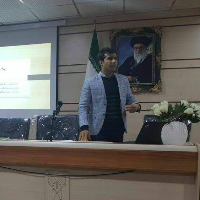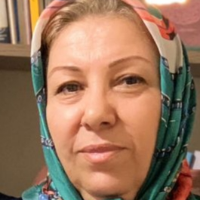Developing and Evaluating the Efficacy of a Comprehensive Educational Program Based on the Auditory Processing Model Concerning Verbal Output in Children with Autism Spectrum Disorders
Autism Spectrum Disorder (ASD) is characterized by deficits in social communication and repetitive behaviors or restricted interests. Communication deficits represent one of the core symptoms of ASD. Up to 25% of individuals with ASD cannot communicate with others using speech sounds. The ability to communicate verbally is considered a positive prognostic indicator of outcomes for children with ASDs. Few studies have tested the efficacy of various interventions for facilitating speech acquisition in children with nonverbal ASDs, using techniques, like orienting cues and other behavioral strategies and prompts. These preliminary studies suggested some improvements in speech production; however, available interventions that specifically focus on increasing speech output in children with nonverbal ASDs remain scarce. Thus, the present study aimed to develop an educational program based on the auditory processing model and evaluate its effects on speech output in children with nonverbal ASDs.
This was quasi–experimental research with a pretest–posttest and a control group design. The statistical population included 4–7–year–olds with ASDs, attending speech therapy centers in Tehran City, Iran, in 2018, who were referred to the research site (speech therapy center located in the sixth district of Tehran.( In total, 40 children with nonverbal ASDs (diagnoses made by pediatric neurologists and neuropsychologists prior to study enrollment) participated in the present study. They were randomly assigned to the experimental and control groups. The inclusion criteria of the study included children with ASDs; the age range of 4 to 7 years, no major medical conditions, such as motor disabilities (e.g., cerebral palsy or tuberous sclerosis), sensory disabilities (e.g., blindness or deafness), and genetic disorders (e.g., Down syndrome) other than ASD, the state of mild to moderate autism severity, having the adequate level of attention and appropriate oral motor function, and the ability to work with the therapist. The exclusion criteria of this study were the non–cooperation of the children’s parents and the unwillingness of children to continue attending the meetings. The parents of all explored children provided written informed consent forms before participating in the research. The Diagnostic Evaluation of Articulation and Phonology–Persian Version (Zarifian et al., 2014), the Childhood Autism Rating Scale (Schopler et al., 1980), and the Auditory Problems Checklist (Fisher, 1976) were used in this study. The experimental group received 36 sessions of the educational program; however, the controls received their routine program. To develop an educational program, research and programs to increase verbal output performed in children with ASDs were reviewed. Then, effective factors in speech production and the identification of major impairments, or the main barriers to speech were evaluated based on the existing literature. Attempts were made to select items among these areas, according to the literature, and factors, i.e., essential and capable of interference. Then, the program was developed based on the characteristics of children with ASDs. Before conducting the main performance, 10 specialists and experts with knowledge, skills, and work experience concerning ASDs were requested to review and comment on the steps and process of the training program as "useful but unnecessary", "unnecessary" and "necessary". Accordingly, the results were estimated using the Content Viability Ratio (CVR). The program was also piloted on three children with ASDs to determine implementation, training capability, and necessary changes before entering the main performance. To analyze the obtained data, descriptive statistics were used to describe the demographic variables. Furthermore, t–test and Analysis of Covariance (ANCOVA) were used in SPSS at the significance level of 0.05.
The collected results indicated that the educational program developed based on the auditory processing model has a CVR of >0.62 and a content validity index of 0.80. The t–test data comparing the mean scores of the study groups revealed no significant difference in age (p=0.756) and auditory processing scores (p=0.536) between the research groups. The ANCOVA results signified that by controlling the pretest effects, there was a significant difference between the experimental and control groups respecting verbal progress (p=0.012) and pronounced vowels (p=0.028). Besides, the mean scores of the experimental group were significantly higher than those of the controls. Furthermore, the presented educational program could effectively improve consonants (effect size: 0.158) and vowels (effect size: 0.123).
The provided comprehensive educational program based on the auditory processing model significantly improved the production of verbal outputs at vowel and consonant levels in numerous studied children with ASDs.
- حق عضویت دریافتی صرف حمایت از نشریات عضو و نگهداری، تکمیل و توسعه مگیران میشود.
- پرداخت حق اشتراک و دانلود مقالات اجازه بازنشر آن در سایر رسانههای چاپی و دیجیتال را به کاربر نمیدهد.



